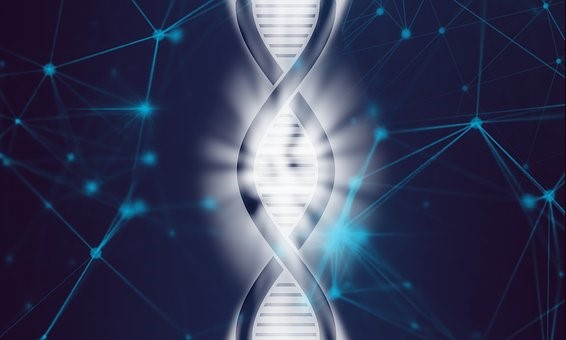Genealogy Research; A Tool That Helps People Locate the Missing Pieces of their Family Puzzles

The passing of time, conflict, migration and a number of other factors have severed family ties for many people around the world. This has created voids in many family trees and indeed in the minds of individuals. For many people, the experience is best explained as an extremely intense version of a very difficult or seemingly unsolvable jigsaw puzzle- an experience that leaves them struggling to find the missing pieces. Thankfully there is a solution for people who desire to reconnect with long lost relatives- genealogy research.
Genealogy research works primarily by finding evidence that indicates a blood relationship between individuals and others in established databases such as historical records. But since the interpretation of historical records isn’t always accurate and the records themselves are sometimes insufficient when it comes to establishing bloodlines, a scientific approach is always a good complement. The use of DNA to establish genetic connections first emerged in the 1970s and has evolved significantly since then. Geneticists worked tirelessly to perfect the DNA testing which today, is trusted as a reliable method of determining genetic connections.

Scientifically based genealogy research focuses on comparing DNA information from target samples with those in existing databases. Scientifically backed genealogy research relies on DNA evidence to establish familial relationships between the owners of the samples used and other people in the established databases.
The DNA samples used for genetic tests include cheek swabs and saliva. The samples are analyzed using one of three man DNA test types; the YDNA test, the Autosomal test or the mtDNA test. The YDNA test establishes links with male ancestors as it identifies the DNA traces passed down to boys by their fathers. The Autosomal test unearths ethnic origins and traces of DNA material linking test takers to their male and female ancestors. The mtDNA test traces DNA connections through maternal lines. Users can, therefore, select the test that will provide the type of results they desire. Some users opt for a combination of test types to allow for the retrieval of a more comprehensive ancestry report.
The value and importance of genealogy research cannot be downplayed because this service provides answers to questions that have been plaguing many people for years resulting in clarity, reconnection, peace-of-mind, closure, and the acquisition of clearer medical histories. As a result, several of the world’s leading universities and colleges offer majors in genealogy studies. These experts after undergoing in-depth training help millions of people to reconnect with their family members.
Today, people who are desirous of finding out more about their family construct have access to convenient genealogy research services through traditional brick and mortar as well as virtual service providers. Through their online platforms, modern genealogy research companies have put the power to unlock hidden family links in the hands of regular people. Most of these services are accessible through e-commerce platforms and offer convenient delivery systems for sample collection and the reporting of results.
Restoring Bonds Broken by Time

Sometimes it is time that causes a rift between people who are related by blood. Over time, factors such as changes in surnames (due to marriage, adoption deed pole, etc.) can create rifts between people who are related. As new generations are added to the family line, the rift grows even wider and if enough time passes the connection disappears. Before the existence of ancestry DNA, these links would likely remain lost indefinitely. Thankfully though, through scientifically grounded genealogy research, these gaps can be closed.
People whose family lines have been distorted through time can get well-needed clarity through genealogy research which offers them an opportunity to travel back in time through their family’s past by exploring their ancestry lineage. Children who were raised by non-biological parents and their descendants are often among those seeking this type of clarity or closure. For people who have lost connection with relatives due to time, ancestry DNA testing provides answers by revealingtheir connections with people in their ancestry line even if they are no longer alive.
Crossing Geographical Boundaries
 Because genealogy research services typically have databases that extend to international regions, users get to uncover bloodline connections that have been severed by physical distance. This means that if migration has caused gaps in your family tree you can rely on genealogy research to help you find your relatives. Of course, it stands to reason that the larger a service’s collection of international entries, the more likely it is to provide accurate ancestry results for clients. This method also allows for the generation of a more comprehensive result as geographical boundaries are eliminated allowing for a wider candidate pool to be involved in the gene matching process.
Because genealogy research services typically have databases that extend to international regions, users get to uncover bloodline connections that have been severed by physical distance. This means that if migration has caused gaps in your family tree you can rely on genealogy research to help you find your relatives. Of course, it stands to reason that the larger a service’s collection of international entries, the more likely it is to provide accurate ancestry results for clients. This method also allows for the generation of a more comprehensive result as geographical boundaries are eliminated allowing for a wider candidate pool to be involved in the gene matching process.
The impact of genealogy research on people around the world is undeniable. There is a deep value that goes beyond its usefulness for completing family trees and aiding in the provision of family medical history- an immeasurable emotion that emerges when someone gest that feeling of completion. Lost relatives are being discovered, and with the other family connections, ethnic background is being revealed helping to resolve identity issues, many people are finding their place in this world thanks to ancestry DNA testing and these are just a few of the benefits being experienced by those who decide to investigate their biological history. The mere fact that the demand for the service is growing rapidly is an indicator of just how much people appreciate and crave it.